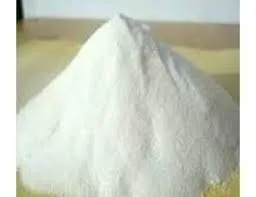
Nov . 18, 2024 19:48 Back to list
hydroxyethyl cellulose thickening mechanism
The Thickening Mechanism of Hydroxyethyl Cellulose
Hydroxyethyl cellulose (HEC) is a water-soluble polymer derived from cellulose, a natural polysaccharide found in the cell walls of plants. Known for its thickening and stabilizing properties, HEC is widely used in various industries, including cosmetics, pharmaceuticals, and food production. Understanding the thickening mechanism of HEC is essential for exploiting its full potential in these applications.
Structure and Properties of HEC
HEC is synthesized through the etherification of cellulose, where ethylene oxide reacts with the hydroxyl groups of cellulose chains. The result is a cellulose derivative with hydroxyethyl groups that enhance its solubility in water and modify its rheological properties. HEC has a unique amphiphilic structure; its hydrophilic hydroxyethyl groups allow it to interact with water, while the hydrophobic regions contribute to its thickening capability.
The degree of substitution (DS) of hydroxyethyl groups on the cellulose backbone influences the properties of HEC. A higher DS generally leads to increased solubility and better thickening performance. HEC is non-ionic and, thus, does not interact with ions in solution, making it stable and effective over a wide range of pH levels and ionic strengths.
Mechanism of Thickening
The thickening effect of HEC in aqueous solutions is primarily attributed to its ability to form a three-dimensional network through physical entanglements and hydrogen bonding. When HEC is dissolved in water, its polymer chains swell and occupy a larger volume, which increases the viscosity of the solution.
1. Hydration and Swelling Upon contact with water, HEC molecules undergo rapid hydration due to the presence of hydroxyl groups. Each HEC chain interacts with water molecules, leading to the formation of a hydration shell around the polymer. The degree of hydration increases with concentration; more polymer leads to more extensive interaction with water, enhancing viscosity.
2. Entanglement As the concentration of HEC increases, the individual chains begin to tangle and overlap. This entanglement restricts the movement of the polymer and, consequently, the flow of the solution. The greater the density of entangled chains, the higher the viscosity, enhancing the thickening effect.
hydroxyethyl cellulose thickening mechanism

3. Hydrogen Bonding The polymer chains can also form hydrogen bonds with one another and with water molecules. This interaction plays a crucial role in stabilizing the three-dimensional network, preventing the chains from slipping past each other. The extent of hydrogen bonding influences the mechanical strength of the thickened solution.
4. Shear Thinning Behavior HEC exhibits shear thinning behavior, meaning that its viscosity decreases with increasing shear rate. Under low shear conditions, the polymer chains are entangled and contribute to high viscosity. However, when shear is applied (such as during mixing or pumping), the chains align in the flow direction, reducing resistance to flow and creating lower viscosity. This property is particularly advantageous in applications where easy application and spreadability are desired.
Applications of HEC
The unique thickening mechanism of HEC makes it a versatile ingredient in various formulations.
- Cosmetics In creams and lotions, HEC acts as a thickener, providing a smooth texture and improving the stability of emulsions. Its ability to retain moisture enhances the feel and performance of skincare products. - Pharmaceuticals HEC is used in drug formulations as a suspending agent, aiding in the dispersion of active ingredients and controlling the viscosity of solutions for oral and topical use.
- Food Industry In food applications, HEC serves as a thickener, emulsifier, and stabilizer, enhancing the mouthfeel and texture of various products.
- Construction HEC is also employed in construction as a thickening agent in cement and mortar formulations, improving workability and preventing segregation of materials.
Conclusion
In summary, the thickening mechanism of hydroxyethyl cellulose is rooted in its unique structure and physical properties. Through hydration, entanglement, and hydrogen bonding, HEC forms a stable, viscous solution that is valuable across multiple industries. Its versatility and effectiveness make it a crucial ingredient in many formulations, demonstrating the importance of understanding its thickening mechanism for optimal application. As research continues to evolve, the potential for new applications of HEC will likely expand, reaffirming its significance in both existing and emerging markets.
-
Versatile Hpmc Uses in Different Industries
NewsJun.19,2025
-
Redispersible Powder's Role in Enhancing Durability of Construction Products
NewsJun.19,2025
-
Hydroxyethyl Cellulose Applications Driving Green Industrial Processes
NewsJun.19,2025
-
Exploring Different Redispersible Polymer Powder
NewsJun.19,2025
-
Choosing the Right Mortar Bonding Agent
NewsJun.19,2025
-
Applications and Significance of China Hpmc in Modern Industries
NewsJun.19,2025







